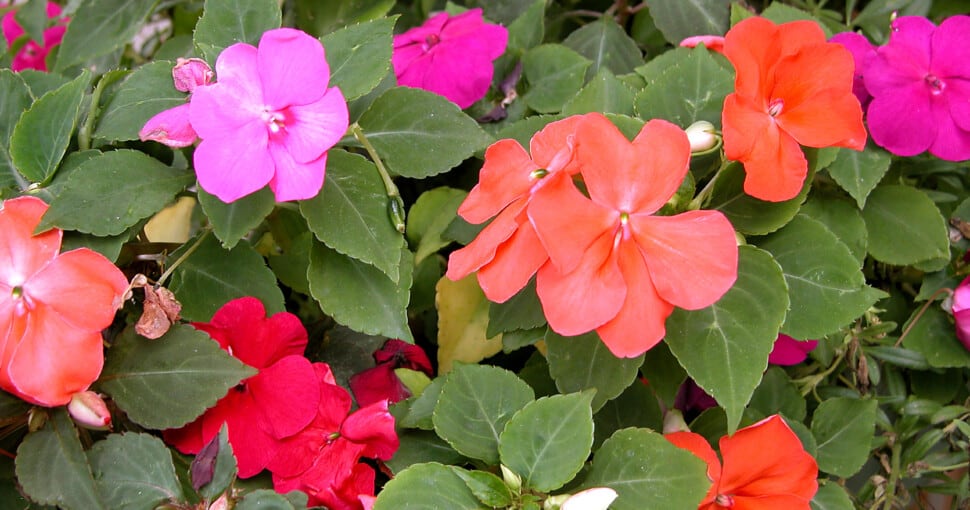Impatiens are one of the most common and beloved annuals in gardens. They are prized for their colorful, bountiful blooms. However, downy mildew – a species-specific mold – has gotten the best of many impatiens, affecting plant health and availability. Consider planting alternative look-alike plants to provide color and interest to your garden.
Contents
Impatiens or busy lizzies are mainstays in borders, hanging baskets, and containers. They belong to the Balsaminaceae or the “touch-me-not” family, which includes over 1,000 impatiens varieties.
Impatiens get their unique nickname “touch-me-not” because their seed capsules explode and eject the seeds when touched or disturbed.
Impatiens are tender perennials in tropical zones but are mostly grown as annuals. They liven summer gardens with masses of brightly colored blooms in white, coral, pink, red, purple, violet, and yellow hues. The plant flowers continuously from early spring through summer and until early fall.
While impatiens walleriana were the “go-to” plant for shady gardens, downy mildew caused most of them to vanish from garden centers. Fortunately, horticulturists are developing new hybrid varieties like the New Guinea Impatiens Impatients hawheri that are resistant to downy mildew.
1. New Guinea Impatiens
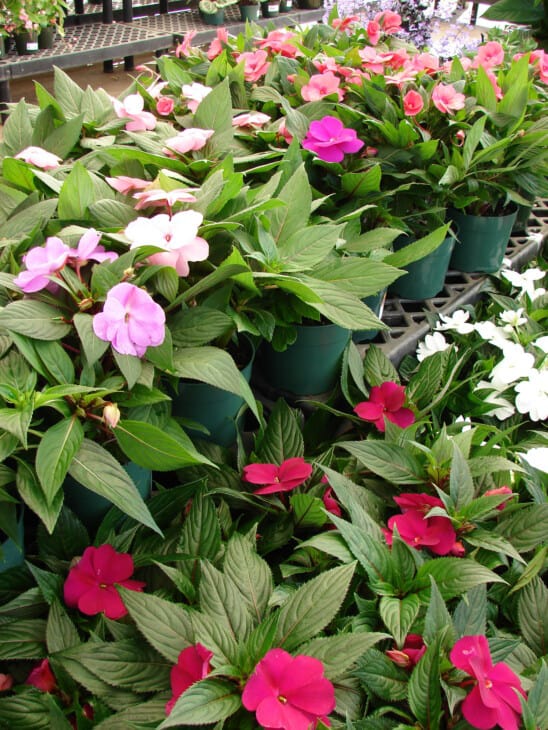
New Guinea impatiens (Impatiens hawkeri) offer an explosion of colorful blooms like the common impatiens variety. The primary factor that sets them apart is that New Guinea impatiens are resistant to downy mildew and have fewer, much larger blooms.
New Guinea impatiens are a true low-maintenance and fuss-free option. They are more sun tolerant than their standard shade-loving counterparts and flower nonstop in summer through to the first frost. New Guinea impatiens will attract butterflies and other pollinators to your garden.
You can plant New Guinea Impatiens by themselves in shade borders or pots or mixed with other shade-lovers like Begonias, Hostas, and Caladium for a beautiful display. Plant New Guinea Impatiens in a spot that receives morning sun and afternoon shade for best results.
2. Miniature Roses
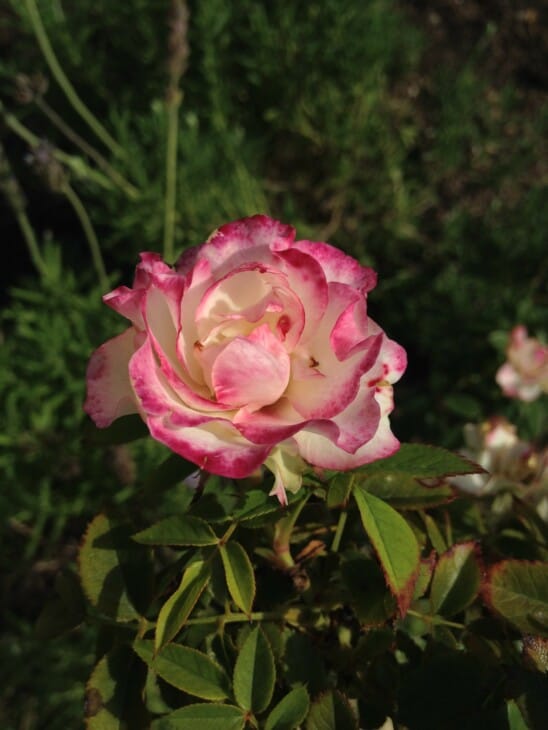
There are no flowers more famous than roses. Miniature roses offer similar flowers to impatiens in size and shape. Miniature roses are true, smaller versions of hybrid tea roses, ranging from one to three feet tall. They come in various growing styles, including climbing, cascading, and compact bushes.
Despite their petite stature, miniature roses have easy growth requirements and are incredibly hardy. Interestingly, they are more robust than their larger cousins, making growing them in colder regions a breeze. Plant miniature roses in a sunny spot with well-draining soil for healthy growth and prolific blooms throughout spring and summer.
Miniature roses are ideal for adding a pop of color to small garden areas, cottage gardens, patios, or inside your home. They add an interesting appeal to just about any space. Consider adding a few vibrant-colored miniature roses to your walkways and mixed borders.
3. Petunias
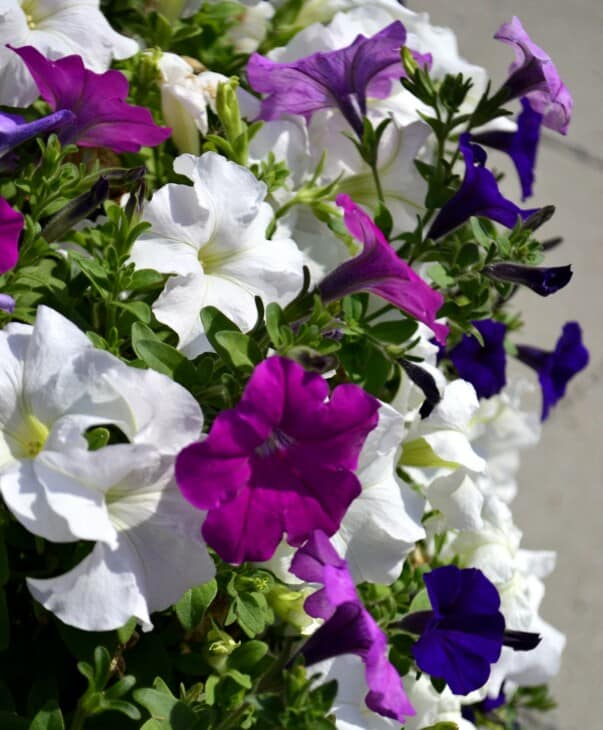
Like impatiens, petunias (Petunias spp.) are among the most popular pot and bedding plants for gardeners. These prolific bloomers boast wide, trumpet-shaped flowers in almost every color but true blue. With hundreds of varieties, petunias can have mounding or cascading growth habits, single or double blooms, smooth or petals, striped and veined, or solid colors.
Some petunias are better suited for pots and containers, while other spreading varieties create beautiful masses in the garden. Petunias fall into four distinct categories based on their growth habit and flower size: grandiflora, multiflora, milliflora, and spreading or groundcover varieties.
For successful growth and blooms, plant petunias in a spot with plenty of light. While mostly grown as annual plants, petunias can grow as perennials in temperature regions with USDA hardiness zones 9 to 11.
Related: Are Petunias Poisonous?
4. Begonia
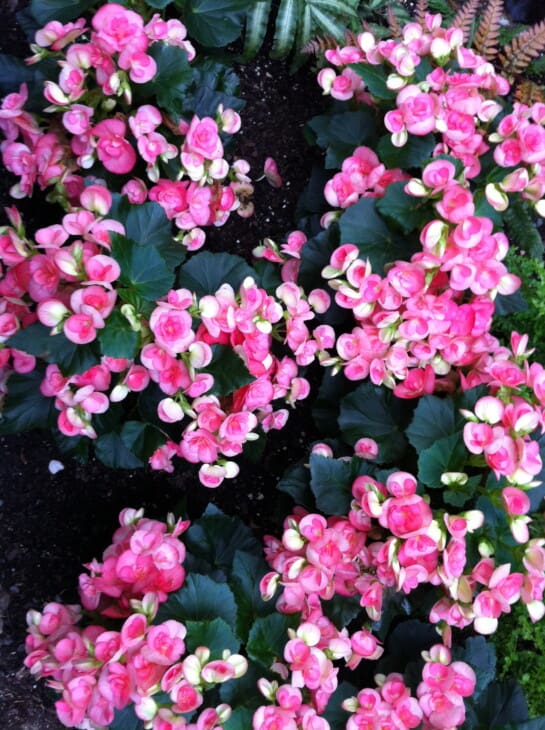
Begonias are flamboyant tender perennials commonly used in summer beds, pots, or hanging baskets. With over 2,000 species, begonias are beloved for their spectacular foliage or bright blooms, depending on the variety.
Begonias’ foliage displays a broad, stunning range of characteristics. The leaves range from round to oblong, asymmetrical, smooth, fuzzy, or pebbled, and with spotted, speckled, or variegated patterns. The flowers can grow as tiny single blooms or foot-wide clusters of hundreds of delicate flowers. They come in all colors but blue.
Begonias typically thrive in dappled or partial shade. Tuberous varieties are ideal for pots and hanging baskets, while foliage begonias are best suited as house plants. Plant begonias for a punch of color and interest to your shady garden and patio.
Related: Are Begonias Poisonous? | 8 Plants That Look Like Begonias
5. Geraniums
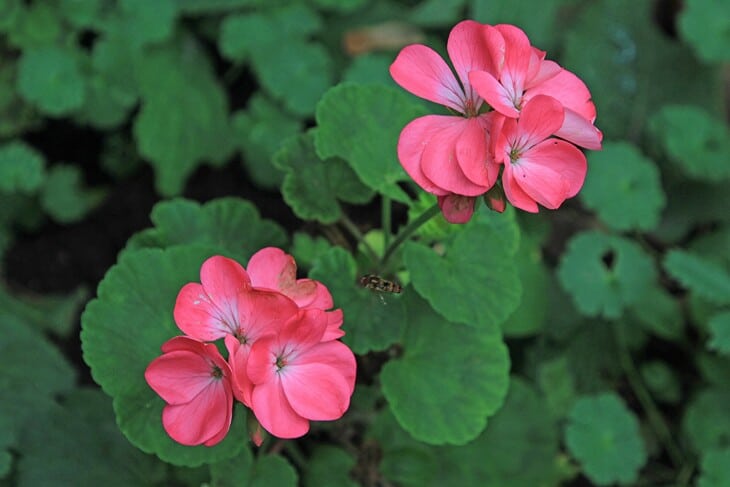
Pelargonium, or geraniums as we commonly call them, are summertime favorites. They are a large group of tender perennials with oak-shaped leaves and clusters of intensely fragrant, colorful blooms. Although perennials are in their native habitat, geraniums are typically grown as annuals as they do not tolerate freezing temperatures.
Several pelargonium geranium varieties exist, including zonal, regal, ivy, and scented. All of them are native to tropical habits and thrive in locations with full sun and well-drained soil. Given the proper requirements and they will provide a summer of lush flowering.
Plant geraniums as a bold statement for window boxes, hanging baskets, and containers. Their lush foliage and bursts of flowers add valuable texture to flower beds and borders. Some varieties make outstanding groundcovers too.
Related: Are Geraniums Poisonous?
6. Annual Vincas
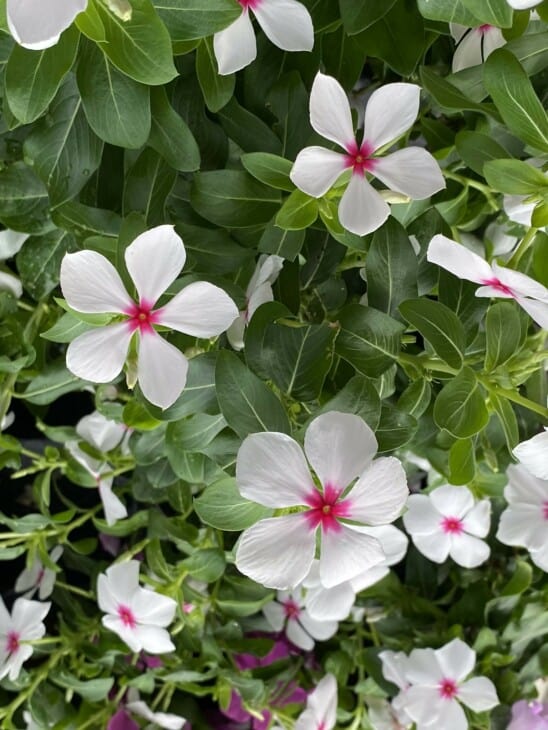
Annual vinca (Catharanthus roseus), also known as Madagascar periwinkle, is a tropical perennial commonly grown as an annual. At first glance, vincas closely resemble impatiens. They boast colorful blooms suspended over dark green, glossy foliage. The flowers feature a contrasting eye and range in white, pink, red, or purple tones.
Contrary to shade-loving impatiens, vincas prefer sunny locations. These plants put on a spectacular display even on the hottest summer days. They also tolerate mild droughts but not overwatering. Ensure to plant them in well-draining, sandy soil.
Annual vinca is available in trailing or upright varieties. Trailing vincas are ideal for hanging baskets, containers, groundcovers, or in beds and borders. The upright varieties are better suited for mass plantings. Note that all parts of the vinca are toxic to animals and humans.
7. Garden Phlox
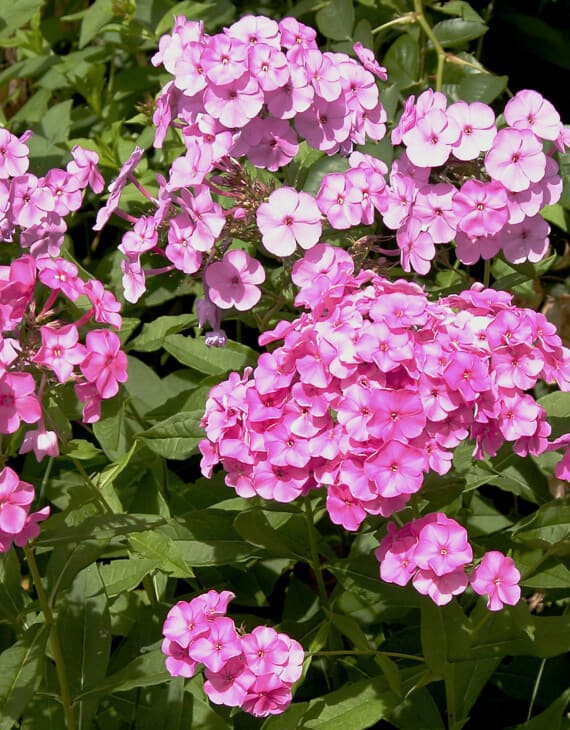
Garden phlox (Phlox paniculata) is a low-maintenance perennial that belongs to the Phlox family, which includes approximately 60 species that resemble impatiens. Garden phlox adds a burst of color to summer gardens and is valued for its long-lasting panicles of blooms held atop upright stalks.
The tall phlox can live for decades when given proper care. They tolerate partial shade and different soil types but thrive in sunny locations and fertile, well-drained soil. Garden phlox is susceptible to root rot and powdery mildew, so ensure the roots aren’t waterlogged.
The garden phlox is a garden classic. It is an excellent choice for cottage gardens and colorful perennial border backdrops. You can plant garden phlox in groupings or individually. Their full, round heads of flower panicles attract hummingbirds and butterflies.
8. Fuchsia
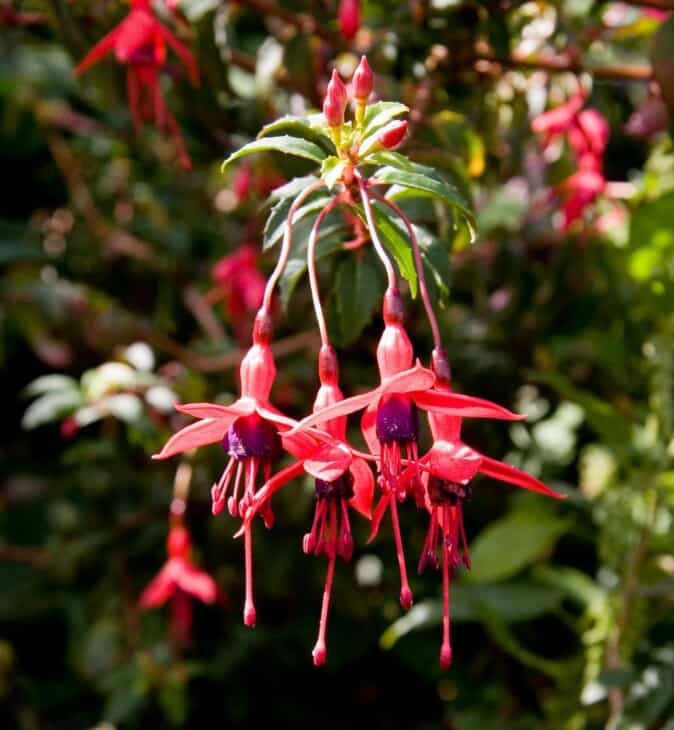
Fuchsia plants are some of the most unique flowers you can add to your garden. They flaunt dozens of dangling, teardrop-shaped blooms from their cascading stems from spring to fall. Their showy flowers are available in various shades of pink, red, purple, and white.
The Fuchsia genus contains over 100 flowering woody shrubs and trees, but the familiar garden fuchsias are generally hybrids cultivated for hanging baskets and pots. Although a little fussy regarding moisture and temperature, fuchsias are still considered easy to grow in containers. Like impatiens, fuchsia does not like too much heat; they prefer shady to part-shade conditions.
Fuchsias are an elegant addition to hanging baskets and patio containers, but they can be planted directly in the garden. Hummingbirds are another welcoming benefit to growing fuchsia in your garden.

